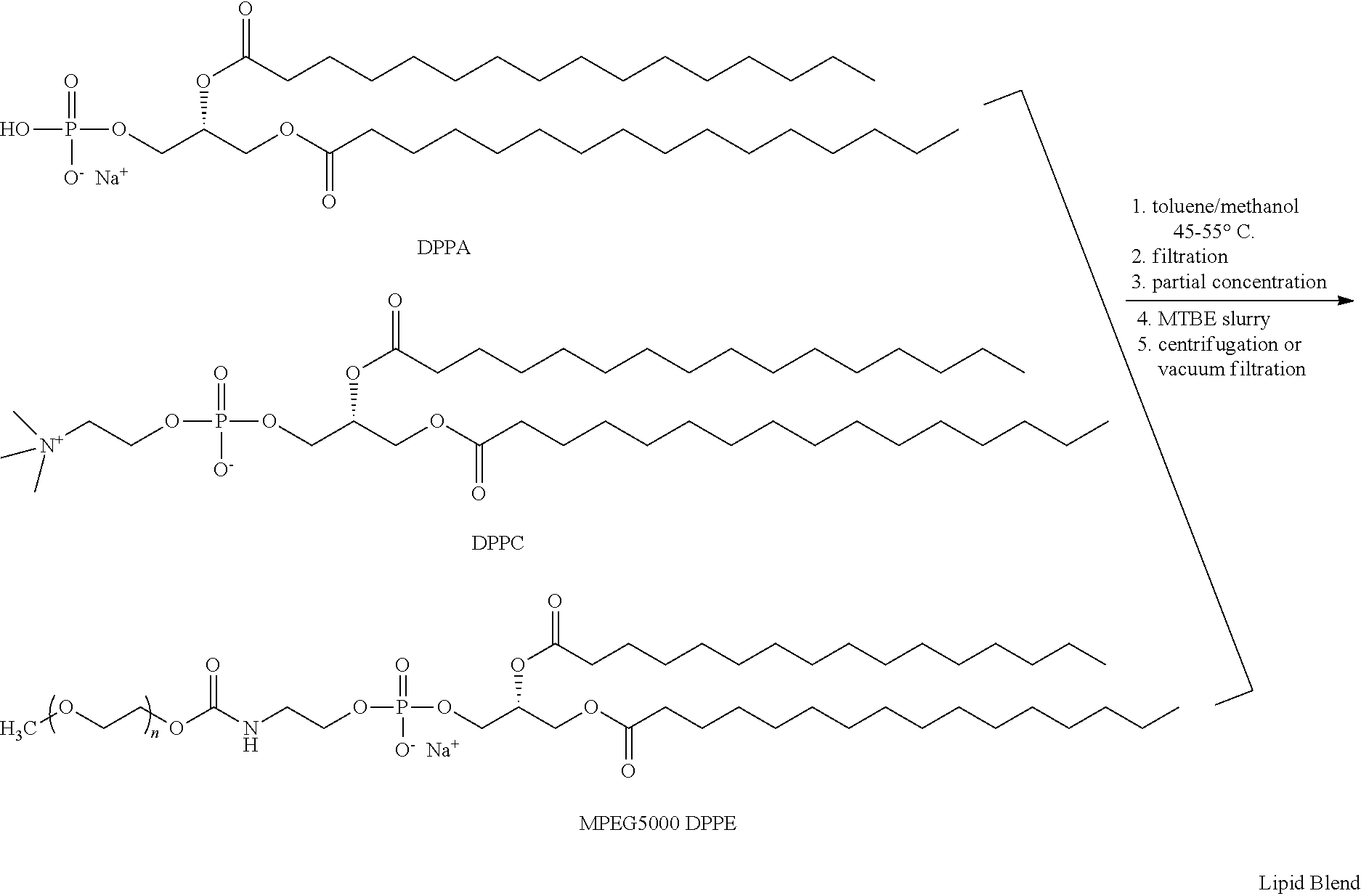Preparation of a lipid blend and a phospholipid suspension containing the lipid blend
a technology which is applied in the field of preparation of lipid blend and phospholipid suspension containing the lipid blend, can solve the problems of difficult dispersibility of lipid powder, difficult scraping of solids out of large reactors, and frequent problems such as simple approach
- Summary
- Abstract
- Description
- Claims
- Application Information
AI Technical Summary
Benefits of technology
Problems solved by technology
Method used
Image
Examples
examples
TABLE 1Lipid Blend Target CompositionMoleLipid NameCommon NameWt %%DPPA1,2-dipalmitoyl-sn-6.010glycero-3-phosphatidic acid,monosodium saltDPPC1,2-dipalmitoyl-sn-53.582glycero-3-phosphatidylcholineMPEG5000N-40.58DPPE(methoxypolyethyleneglycol 5000carbamoyl)-1,2-dipalimitoyl-sn-glycero-3-phosphatidylethanolamine, monosodiumsalt
Lipid Blend Manufacturing Procedure
A flask is charged with toluene (3.3 L), methanol (1.2 L), DPPA (59.6 g), DPPC (535 g), and MPEG5000 DPPE (405 g). After rinsing solid contact surfaces with 0.9 L methanol, the slurry is warmed to 45-55° C. until dissolution is complete.
The solution is filtered and then concentrated in vacuo at 35-45° C. to a thick gel. Methyl t-butyl ether (MTBE, 5.4 L) is added and the mixture is slurried at 15-30° C. White solids are collected by centrifugation or vacuum filtration, and washed with MTBE (0.9 L). The solids are then placed in a vacuum oven and dried to constant weight at 40-50° C. The dried Lipid Blend is transferred to a bot...
PUM
| Property | Measurement | Unit |
|---|---|---|
| temperature | aaaaa | aaaaa |
| temperature | aaaaa | aaaaa |
| temperature | aaaaa | aaaaa |
Abstract
Description
Claims
Application Information
 Login to View More
Login to View More - R&D
- Intellectual Property
- Life Sciences
- Materials
- Tech Scout
- Unparalleled Data Quality
- Higher Quality Content
- 60% Fewer Hallucinations
Browse by: Latest US Patents, China's latest patents, Technical Efficacy Thesaurus, Application Domain, Technology Topic, Popular Technical Reports.
© 2025 PatSnap. All rights reserved.Legal|Privacy policy|Modern Slavery Act Transparency Statement|Sitemap|About US| Contact US: help@patsnap.com


